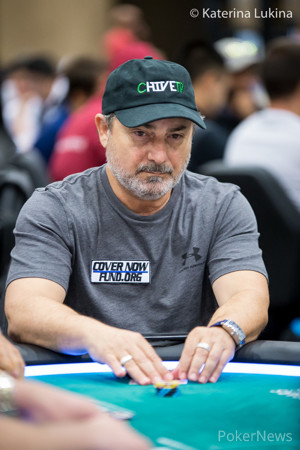Home Poker Tournament Blind Structure
- 4 - Structure templates Because you may use the same structures from tournament to tournament and creating a good structure can require a lot of time and be tedious, Poker Tournament Supervisor uses structure templates. Blind schedule, payout, buy-in once created, you'll just have to select the one you want to apply to your upcoming tournament.
- Draw poker is any poker variant in which each player is dealt a complete hand before the first betting round, and then develops the hand for later rounds by replacing, or 'drawing', cards. 1 The descriptions below assume the reader is familiar with the general game play of poker, and with hand values (both high and low variations).
- You can also use the suggested structures in many home poker tournament programs. However, if you’re bereft of either of these items, you can just have your players start with 5,000 chips and 25/50 blinds. Double the blinds every 15 minutes. Add an ante at 200/400 of roughly 1/8th the big blind’s size.
Setting the blind structure is probably the most difficult part about organizing a home poker tournament. If the blinds increase too slowly, you will need to cook your guests breakfast. If the blinds increase too rapidly, you might as well flip a coin to determine the. Usually, the Big Blind is double the size of the Small Blind, however this may vary according to the betting structure in play. When you’re playing no limit poker games and pot limit poker games, the games will be referred to according to the Small Blind and the Big Blind for example $2/$4 Hold’em games will have a Small Blind of $2 and a.
I'm sure you're capable of buying beer and nuts. If your friends want coke and sweets, fine, that's what you get them. Mussels and red wine? Do it.
I won't touch on that part of your poker night. You should know your friends. However, there are a few small things that may ruin the fun.
If you don't set up a good blind structure and sensible chip values, people will be confused and annoyed. Do it well and your home tournament will run smoothly.
Blind periods
In a home game, I would go with 20 minute periods at least, seeing how slowly most people deal.
If you think the tournament will drag on too long, it's probably better to adjust the starting stacks than the blind periods.
Ending time
There's no way of knowing for sure when a tournament will end, but here's a rule of thumb that will help you avoid disasters.
The tournament will end in the blind period where the big blind is more than 5% of the total chips.
Example: If 10 players start out with 10,000 in chips each, the total chips are 100,000. Hence, the tournament will end in the period where the big blind reaches 5,000.
Again, this is a very crude rule, but you will avoid having to stay up the whole night - unless you want to.
Blind structure
Usually you want to increase the blinds by 50% from level to level, so that the big blind doubles every two levels. If you double it every level, it's a fast structure.
Example: 100/200 - 200/300 - 200/400
On the other hand, you should probably use some 'natural' blind levels that people expect, rather than rigidly doubling every two levels.
Example: rather than 200/400 - 300/600 - 400/800 - 600/1200, you might want to go with 250/500 - 400/800 - 500/1000 - 750/1500.
On the third hand, you should avoid mixing in small chip nominations late in the structure. Blinds of 1250 or 3725 will give your friends a really bad headache.
Example: To avoid this, it's quite fine to do 300/500 instead of 250/500, or 800/1500 instead of 750/1500.
There are a lot of parameters, but you'll be fine if you avoid the worst mistakes.
Example blind structure
1. 25/50
2. 50/100
3. 75/150
4. 100/200
5. 150/300
6. 250/500
7. 400/800
8. 500/1000
9. 800/1500
10. 1000/2000
11. 2000/3000
12. 2500/5000
13. 4000/8000
Poker Tournament Blind Structure Calculator
14. 5000/10,000
Starting stack
The standard starting stack would be 100 to 200 times the big blind of the first blind level.
Example: If you start with blinds 25/50, you could use a starting stack of 5,000 or 10,000.
The starting stack affects both how deep stacked the players are and the length of the tournament. Regarding the ending time, see above.
If you want to start with deep stacks to get some real play early on but don't want to play all night, you could use a faster structure.

Example: To get a faster structure, remove level 1, 3, 5 etc. from the blind structure above.
Chip nominations
To make the betting easy, chip values should go up by a factor 4 or 5 between each step.
Example: Avoid using both 100 and 200 chips. It gets messy.
Home Poker Tournament Structure
Example: Comfortable chip nominations for the above blind structure would be 25, 100, 500 and 2000. If your people find 2000 too weird, you can go with 1000 or 5000 instead.